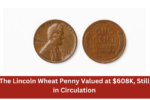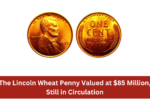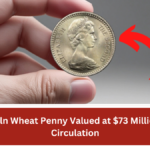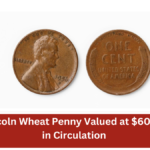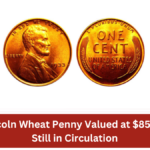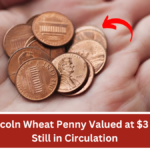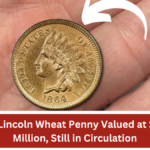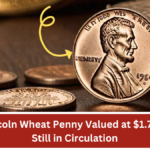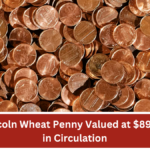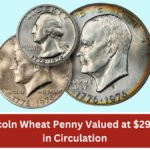For coin collectors and enthusiasts, the hunt for rare and valuable coins is an exhilarating pursuit. Among the treasures that spark significant interest are the elusive Bicentennial quarters. While most people remember these coins for their iconic design commemorating the 200th anniversary of American independence, only a few are aware of their potential value. Some of these Bicentennial quarters have fetched nearly $20,000 at auctions, making them a collector’s dream.
The Unique Appeal of Bicentennial Quarters
The U.S. Mint introduced the Bicentennial quarter in 1976 to celebrate the nation’s 200th birthday. Unlike regular quarters, the Bicentennial quarter features a distinctive reverse design: an image of a Colonial drummer with a torch surrounded by 13 stars. The obverse (front) still bears the familiar profile of George Washington, but with a dual date of “1776-1976,” making it stand out from other quarters.
These quarters were minted in large quantities, but some rare variations have become highly sought after by collectors. Let’s explore the three rare types of Bicentennial quarters that have recently reached impressive auction prices, nearing $20,000.
Silver Bicentennial Quarters
While most Bicentennial quarters were struck in copper-nickel, a limited number were produced in 40% silver. These silver quarters were sold in special collector’s sets, not released into circulation, which makes them far more valuable today. In pristine condition, uncirculated silver Bicentennial quarters can be worth hundreds or even thousands of dollars. Their scarcity and precious metal content drive their high value among collectors.
A silver Bicentennial quarter graded by the Professional Coin Grading Service (PCGS) at MS67 recently sold for close to $19,200. The near-perfect condition of the coin and its rarity contributed to the extraordinary auction price.
Error Quarters
In any minting process, errors occasionally occur, and when these flawed coins make it into circulation, they become highly desirable among collectors. Error Bicentennial quarters, particularly those with major minting defects such as double strikes, off-center strikes, or die cracks, can fetch premium prices at auction.
One notable error, a double-struck Bicentennial quarter, recently garnered significant attention and was sold for over $16,000. Such errors are exceedingly rare, making them worth a considerable amount compared to standard Bicentennial quarters.
High-Grade Clad Bicentennial Quarters
Even though millions of copper-nickel Bicentennial quarters were produced, only a small fraction remain in flawless condition. Coins that have been carefully preserved and exhibit no signs of wear or damage, especially those with a grading of MS68 or higher, are incredibly rare and valuable.
A Bicentennial quarter in such top condition was auctioned for nearly $20,000. Coins with the highest grades—denoted by organizations like PCGS and the Numismatic Guaranty Corporation (NGC)—are highly coveted by collectors looking for pristine specimens. These perfect-condition quarters can become the centerpiece of any serious collection.
Why Are These Quarters So Valuable?
Several factors contribute to the skyrocketing value of rare Bicentennial quarters:
- Limited Mintage: Silver quarters and error coins were produced in small quantities, increasing their rarity.
- Historical Significance: The Bicentennial quarters commemorate an important milestone in U.S. history, giving them added historical value.
- Condition: Coins in mint condition, especially those with high grading, are much more valuable due to their rarity and aesthetic appeal.
- Collector Demand: As more collectors seek out these rare coins, competition drives up prices at auction.
How to Identify Rare Bicentennial Quarters
If you happen to have Bicentennial quarters in your possession, it’s worth checking them closely for their type and condition. Here are a few tips to identify valuable quarters:
- Silver Quarters: Check the edge of the coin. If the edge is solid silver (without the copper strip seen in clad coins), it may be one of the rare silver Bicentennial quarters.
- Mint Marks: Look for quarters with an “S” mintmark, which indicates they were struck in San Francisco as part of a special proof set. These are more likely to be silver.
- Condition: High-grade coins (MS68 or higher) will show no signs of wear, scratches, or damage. If you think you have a high-grade coin, consider getting it professionally graded.
- Errors: Examine the coin for any minting errors, such as double strikes or off-center designs. Even small imperfections can make a coin much more valuable.
What makes Bicentennial quarters valuable?
Rare Bicentennial quarters are valuable due to their limited mintage, error variations, silver content, and high-grade condition. Some can fetch nearly $20,000 at auctions.
How can I tell if my Bicentennial quarter is silver?
Check the edge of the coin. Silver Bicentennial quarters will have a solid silver edge, while copper-nickel clad coins will show a copper stripe.
What are error Bicentennial quarters?
These quarters have minting mistakes, such as double strikes or off-center designs. These rare errors can significantly increase the coin’s value.
How much is a high-grade Bicentennial quarter worth?
A high-grade (MS68 or higher) Bicentennial quarter in perfect condition can be worth close to $20,000 depending on its rarity and demand.
Where can I get my Bicentennial quarter graded?
You can have your coin professionally graded by organizations like the Professional Coin Grading Service (PCGS) or the Numismatic Guaranty Corporation (NGC).


